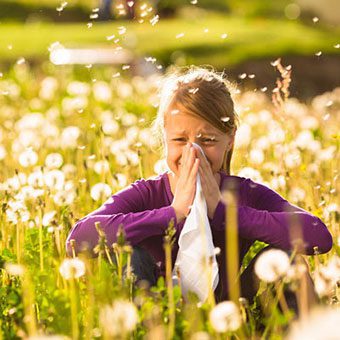
Allergies 101
 The seasons are always changing. Whenever we seem to get adjusted to one type of allergy another comes a long because the seasons are changing. In the Midwest it’s harder it seems because every type of pollen finds its way settling along the banks of the Ohio. It’s like allergies may never leave. Even if you have seasonal allergies, it’s good to know when you’ll come up for a breath and not do so while coughing. Everyone here at Tom Wallace Insurance Agency, LLC wants you to be in the best health possible. We know it’s difficult because we live in a place where allergies seem to be a constant thing. So here’s a look at which allergies plague people and when.
The seasons are always changing. Whenever we seem to get adjusted to one type of allergy another comes a long because the seasons are changing. In the Midwest it’s harder it seems because every type of pollen finds its way settling along the banks of the Ohio. It’s like allergies may never leave. Even if you have seasonal allergies, it’s good to know when you’ll come up for a breath and not do so while coughing. Everyone here at Tom Wallace Insurance Agency, LLC wants you to be in the best health possible. We know it’s difficult because we live in a place where allergies seem to be a constant thing. So here’s a look at which allergies plague people and when.
January
During the winter, there’s less pollen floating around, but cranking up the heat indoors can kick up house dust, a winter allergy trigger. If you’re allergic to dust, winter allergies can be just as bad as in the spring and fall. To reduce dust exposure, it helps to keep your home’s humidity below 55%, use a vacuum and encase pillows and mattresses with dust-mite-proof covers.
February
Mold and dust can cause year-round allergy symptoms, but even if dust and mold don’t bring on the sniffles for you, trees can cause your allergies to flare at this time of year, depending on where you live. Tree pollen can cause the same symptoms as most spring allergies- watery eyes, sneezing, and nasal congestion.
March
Tree pollen remains high on the list of allergens during March, which begins spring! If you have spring allergies, keep your eye on the pollen count. When the count is high the worse the allergies will be. To check the pollen count, look at the National Allergy Bureau of the American Academy of Allergy Asthma & Immunology‘s website.
April
Rain accounts for the blooming flowers in April. Even though the flowers are beautiful, their pollen causes discomfort for people with spring allergies. On top of flower allergies, there’s also grass allergies. In the Midwest, we have a lot of grass allergens, so make sure to be aware of fresh cut grass.
May
Tree pollen is still around during this time of year. In February tree pollen begins and lasts through May.
June
June’s main allergy is grass during this time of year. The warm weather encourages you to stay outside and enjoy the sunshine; just be aware of the pollen count with the grass pollen in the air.
July
Now you might be thinking that you have your allergies under control, but that’s when it hits you the hardest. During July, fungus spores and seeds begin. If you have spring allergies, you may seem like you are never going to get rid of them at this point in the year.
August
August is a prime month for people with summer allergies to mold spores, which peak during hot, humid weather. When the mold spore count is high, you may want to stay inside. During the humid weather you may want to run the air conditioning to always be running.
September
Late summer and early fall ragweed is the most common cause of fall allergies. In the Midwest you can see ragweed all over the place, it’s one the most common wildflower it seems. Depending on where you live, ragweed-fueled fall allergies can start in August or September and continue through October and November. Pollen grains are lightweight and spread easily. The more wet and windy autumn is in your area, the more easily the pollen spreads, and the worse your symptoms will feel.
October
Chances that fall allergies will ease by October get better the farther north you go in the United States. But in warmer climates, fall allergies can linger well into this month. Seasonal rain and wind can also ramp up mold spores- if your fall allergies include mold or fungi spores, your symptoms may linger.
November
November may be one of the best months for people with outdoor allergies, which allows for enjoying the crisp weather. Then, just in time, indoor allergies to bed dander and indoor molds pick up.
December
As pretty as they are, real Christmas trees can make you wheeze and sneeze. It’s likely not the tree itself that triggers allergies, but the microscopic mold spores that can harbor in its branches.
Allergies are a given in the Midwest and especially in Harrison County. Make sure you know what you are up against.
For all your insurance needs contact Tom at [email protected] or Brian at [email protected].
